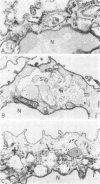Abstract
Idiopathic reactions occurring during the infusion of hyperosmolar solutions, such as radiocontrast dyes, cause a significant number of deaths each year. These reactions are similar to those which follow mediator release during allergen-induced anaphylaxis. In attempting to explain these nonimmunologic reactions, we examined the direct effect of hyperosmolarity on normal human basophils with emphasis on release induced by mannitol.
The cells of all donors released histamine in vitro in response to hyperosmolar (0.2-0.7 M) solutions of a number of solutes including mannitol. That this was not a toxic process was supported by a number of criteria, including inhibition of release by excess stimulus at 37°C and a lack of release at 4°C. Furthermore, electron microscopic studies revealed that hyperosmolar stimulation did not disrupt the cell membrane or lead to any signs of cytotoxicity. In contrast to antigen-stimulated release, where granules fuse only with the cell membrane, granules in mannitol-stimulated cells, in addition to fusing with the cell membrane, may also be extruded into a common intracellular sac before exteriorization.
Characteristics similar to antigen-induced histamine release included the time-course for release, inhibition by drugs that modify phospholipid metabolism, p-bromophenacyl bromide, and eicosa-5,8,11,14-tetraynoic acid, and augmentation of release by deuterium oxide (D2O). The release process differed from antigen-induced release by a number of criteria, including independence from immunoglobulin (Ig)E-related mechanisms, insensitivity to agonists that elevate intracellular cyclic AMP, minimal dependence on extracellular calcium, lack of inhibition by 2-deoxyglucose and theophylline, and a temperature optimum of 32°C.
We conclude that this noncytotoxic hyperosmolar release process is different from IgE-mediated secretory events and may well play a role in the idiopathic reactions which occur secondary to the infusion of hyperosmolar solutions in man.
Full text
PDF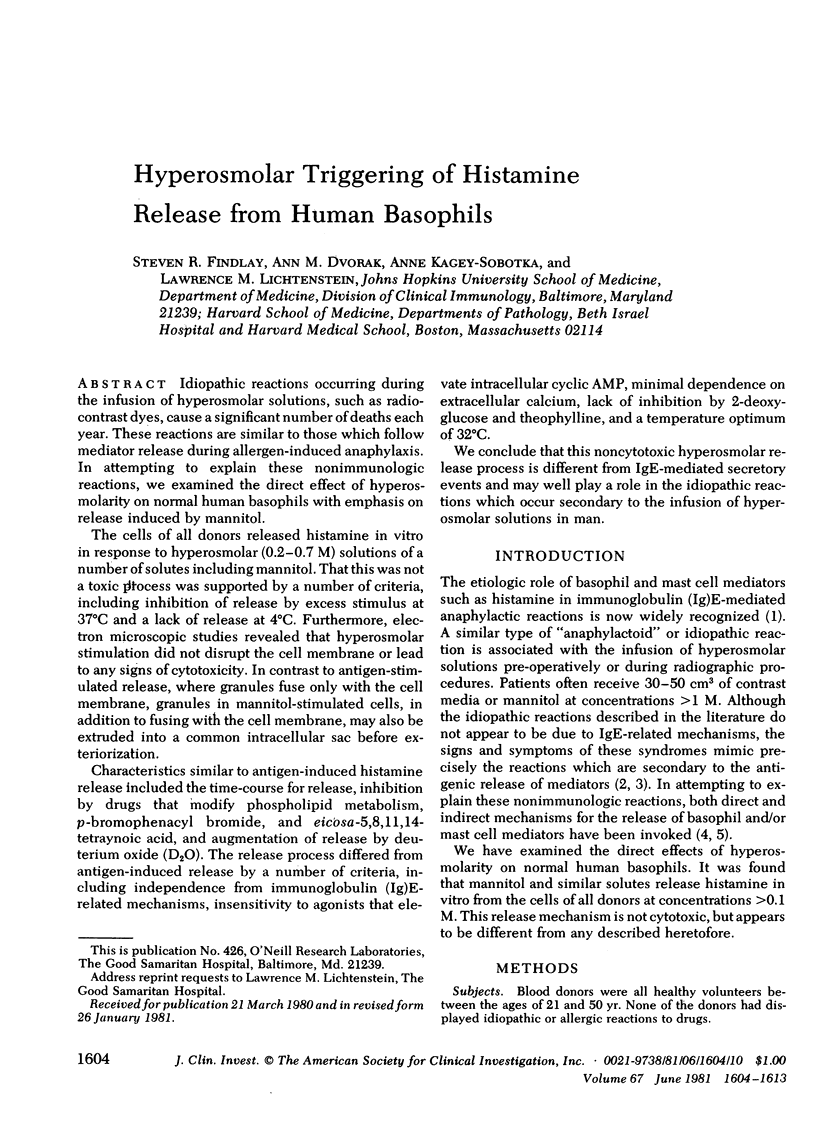
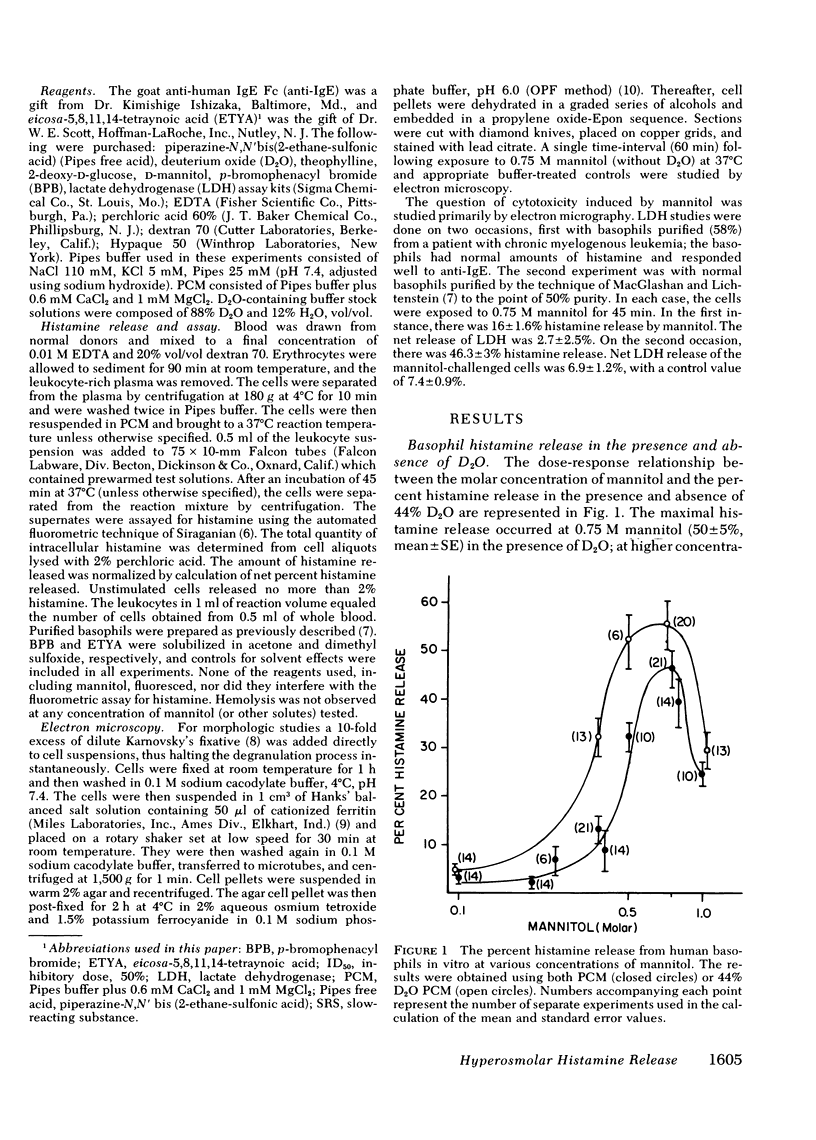
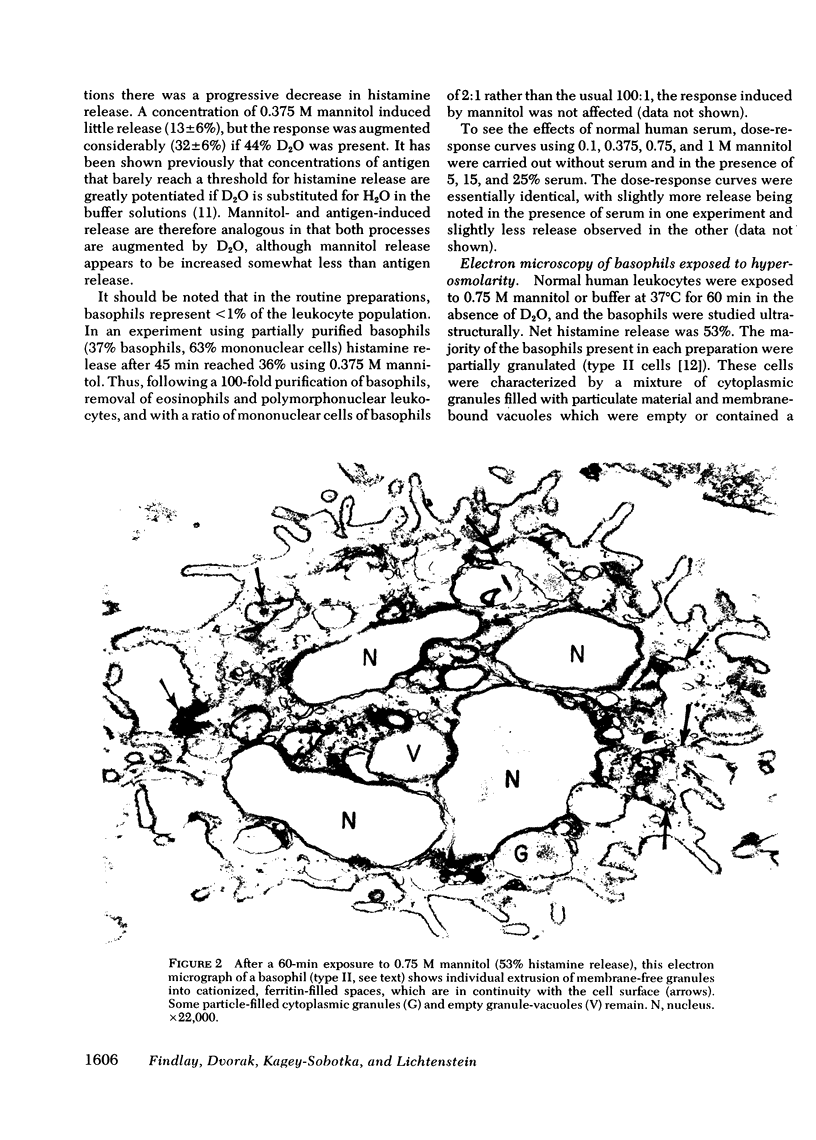
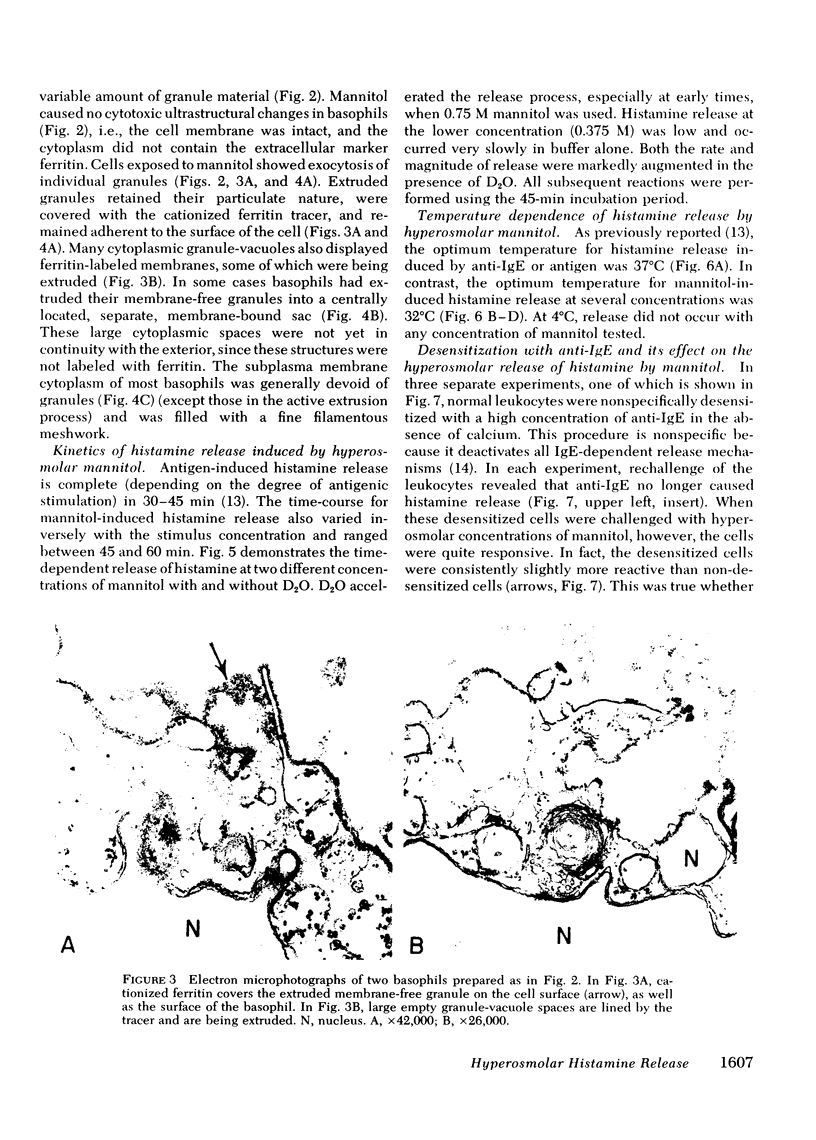
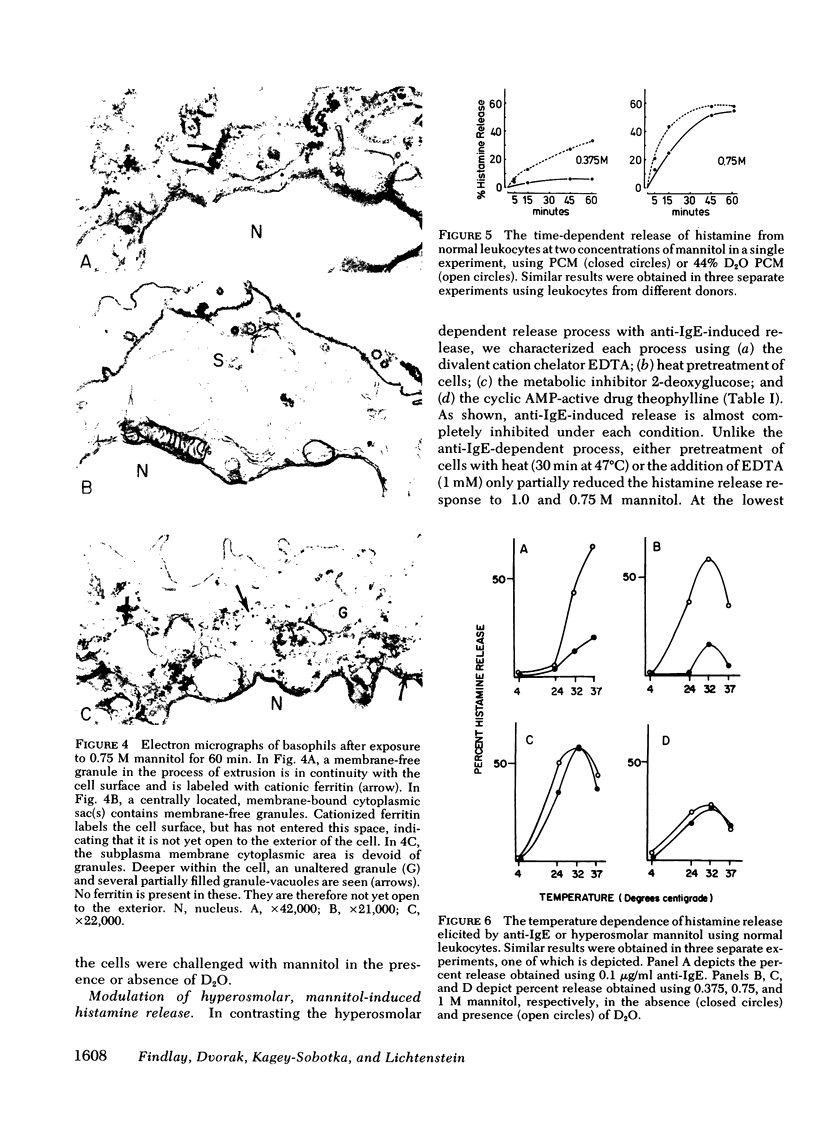
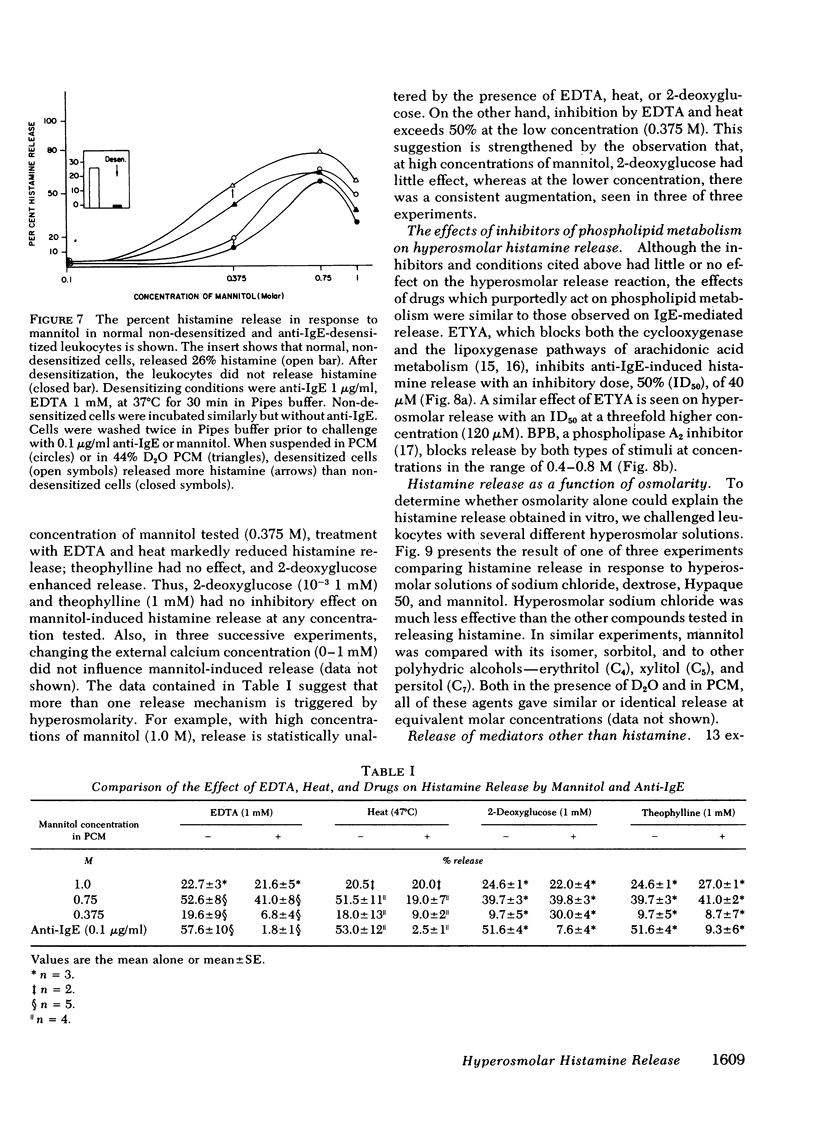
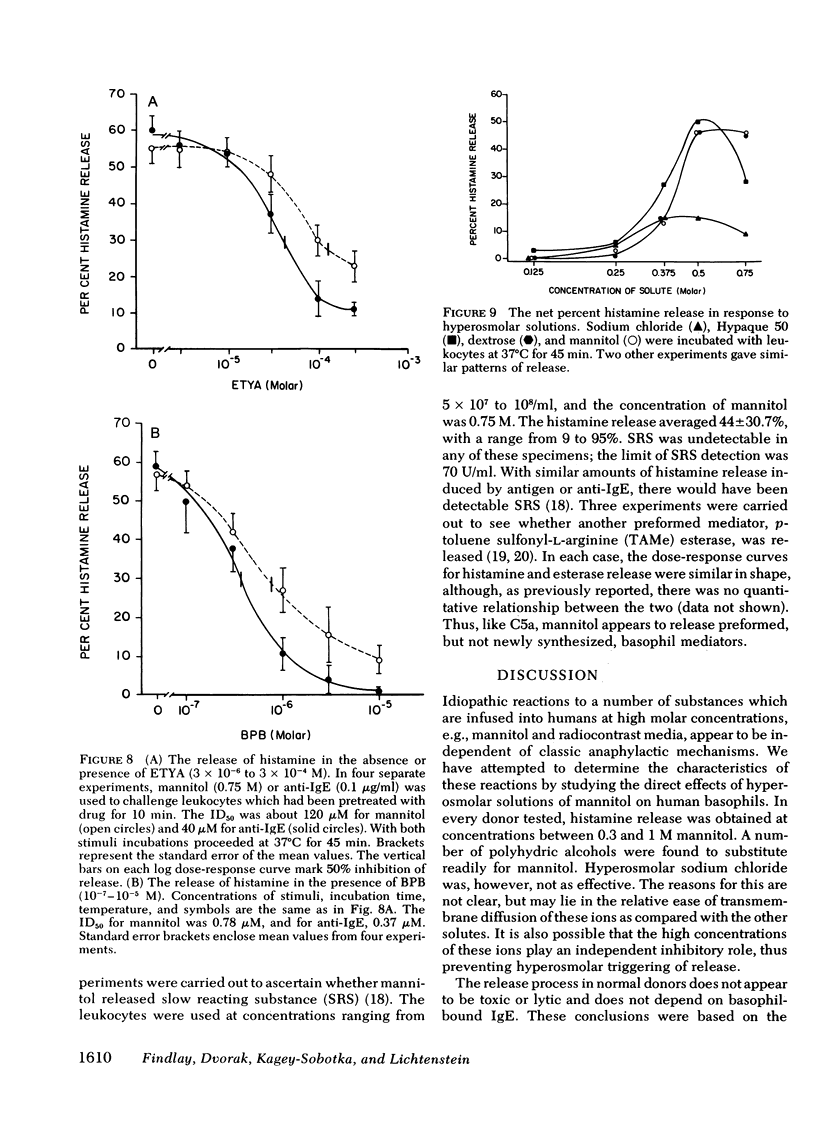
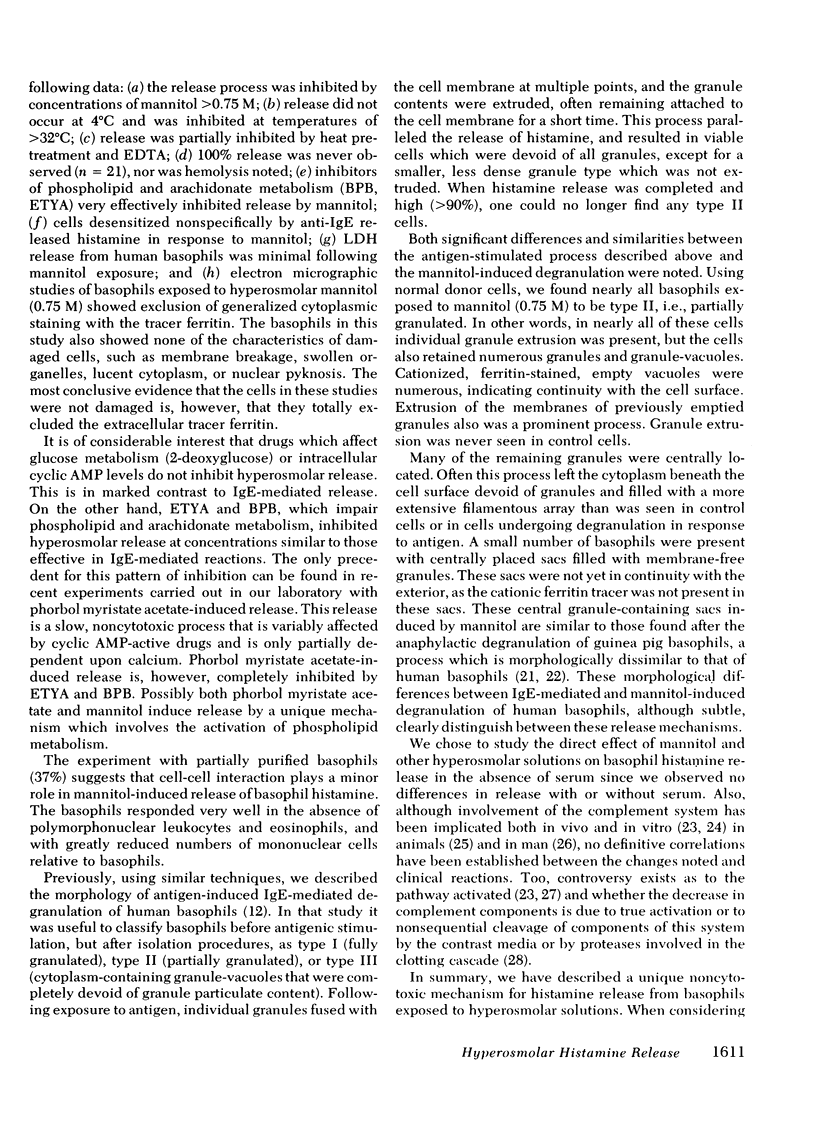
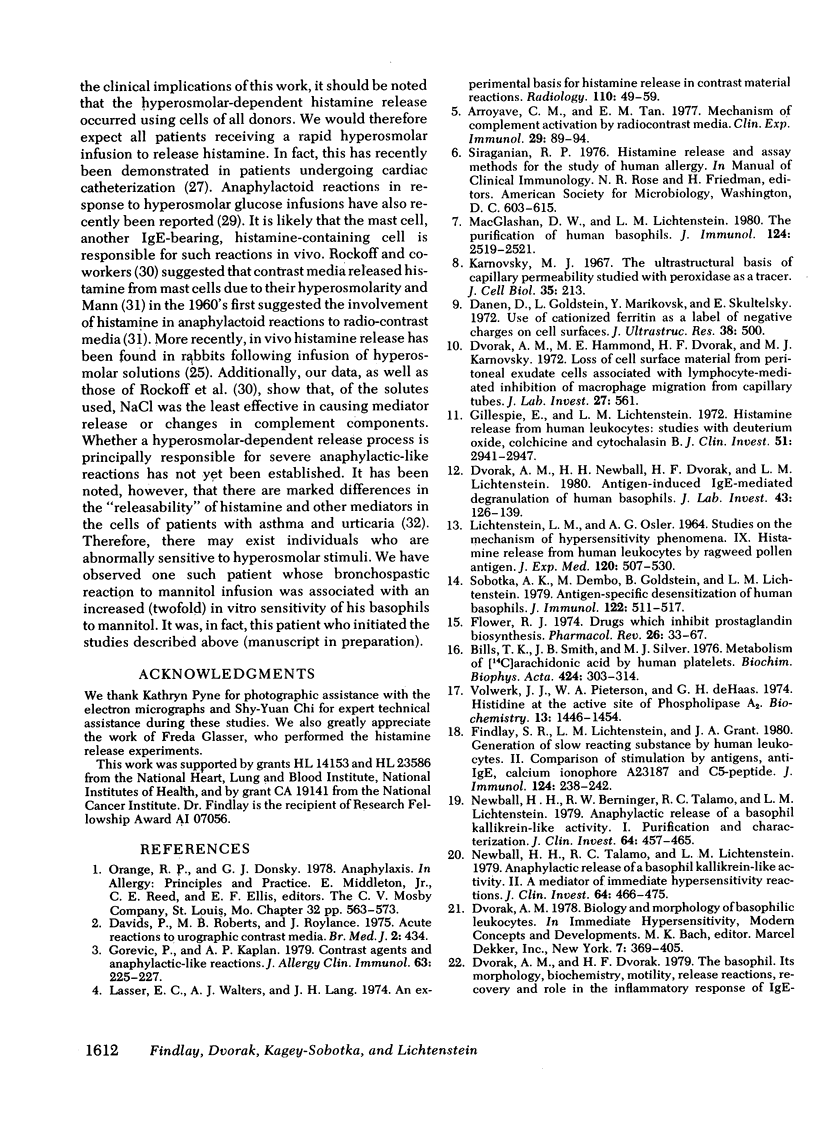
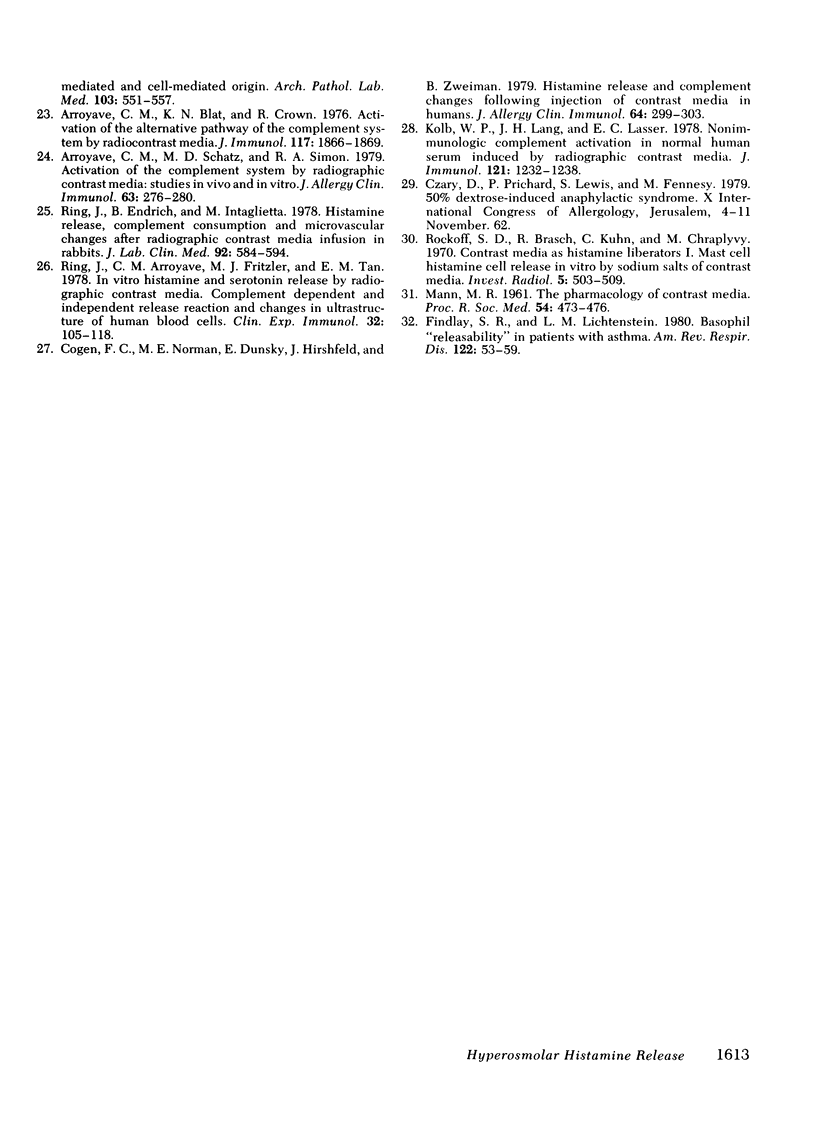
Images in this article
Selected References
These references are in PubMed. This may not be the complete list of references from this article.
- Arroyave C. M., Bhat K. N., Crown R. Activation of the alternative pathway of the complement system by radiographic contrast media. J Immunol. 1976 Nov;117(5 PT2):1866–1869. [PubMed] [Google Scholar]
- Arroyave C. M., Schatz M., Simon R. A. Activation of the complement system by radiographic contrast media: studies in vivo and in vitro. J Allergy Clin Immunol. 1979 Apr;63(4):276–280. doi: 10.1016/0091-6749(79)90113-1. [DOI] [PubMed] [Google Scholar]
- Arroyave C. M., Tan E. M. Mechanism of complement activation by radiographic contrast media. Clin Exp Immunol. 1977 Jul;29(1):89–94. [PMC free article] [PubMed] [Google Scholar]
- Bills T. K., Smith J. B., Silver M. J. Metabolism of [14C]arachidonic acid by human platelets. Biochim Biophys Acta. 1976 Feb 23;424(2):303–314. doi: 10.1016/0005-2760(76)90198-3. [DOI] [PubMed] [Google Scholar]
- Cogen F. C., Norman M. E., Dunsky E., Hirshfeld J., Zweiman B. Histamine release and complement changes following injection of contrast media in humans. J Allergy Clin Immunol. 1979 Oct;64(4):299–303. doi: 10.1016/0091-6749(79)90148-9. [DOI] [PubMed] [Google Scholar]
- Danon D., Goldstein L., Marikovsky Y., Skutelsky E. Use of cationized ferritin as a label of negative charges on cell surfaces. J Ultrastruct Res. 1972 Mar;38(5):500–510. doi: 10.1016/0022-5320(72)90087-1. [DOI] [PubMed] [Google Scholar]
- Davies P., Roberts M. B., Roylance J. Acute reactions to urographic contrast media. Br Med J. 1975 May 24;2(5968):434–437. doi: 10.1136/bmj.2.5968.434. [DOI] [PMC free article] [PubMed] [Google Scholar]
- Dvorak A. M., Dvorak H. F. The basophil. Its morphology, biochemistry, motility, release reactions, recovery, and role in the inflammatory responses of IgE-mediated and cell-mediated origin. Arch Pathol Lab Med. 1979 Oct;103(11):551–557. [PubMed] [Google Scholar]
- Dvorak A. M., Hammond M. E., Dvorak H. F., Karnovsky M. J. Loss of cell surface material from peritoneal exudate cells associated with lymphocyte-mediated inhibition of macrophage migration from capillary tubes. Lab Invest. 1972 Dec;27(6):561–574. [PubMed] [Google Scholar]
- Dvorak A. M., Newball H. H., Dvorak H. F., Lichtenstein L. M. Antigen-induced IgE-mediated degranulation of human basophils. Lab Invest. 1980 Aug;43(2):126–139. [PubMed] [Google Scholar]
- Findlay S. R., Lichtenstein L. M. Basophil "releasability" in patients with asthma. Am Rev Respir Dis. 1980 Jul;122(1):53–59. doi: 10.1164/arrd.1980.122.1.53. [DOI] [PubMed] [Google Scholar]
- Findlay S. R., Lichtenstein L. M., Grant J. A. Generation of slow reacting substance by human leukocytes. II. Comparison of stimulation by antigen, anti-IgE, calcium ionophore, and C5-peptide. J Immunol. 1980 Jan;124(1):238–242. [PubMed] [Google Scholar]
- Flower R. J. Drugs which inhibit prostaglandin biosynthesis. Pharmacol Rev. 1974 Mar;26(1):33–67. [PubMed] [Google Scholar]
- Gillespie E., Lichtenstein L. M. Histamine release from human leukocytes: studies with deuterium oxide, colchicine, and cytochalasin B. J Clin Invest. 1972 Nov;51(11):2941–2947. doi: 10.1172/JCI107118. [DOI] [PMC free article] [PubMed] [Google Scholar]
- Gorevic P., Kaplan A. P. Contrast agents and anaphylactic-like reactions. J Allergy Clin Immunol. 1979 Apr;63(4):225–227. doi: 10.1016/0091-6749(79)90105-2. [DOI] [PubMed] [Google Scholar]
- Karnovsky M. J. The ultrastructural basis of capillary permeability studied with peroxidase as a tracer. J Cell Biol. 1967 Oct;35(1):213–236. doi: 10.1083/jcb.35.1.213. [DOI] [PMC free article] [PubMed] [Google Scholar]
- Kolb W. P., Lang J. H., Lasser E. C. Nonimmunologic complement activation in normal human serum induced by radiographic contrast media. J Immunol. 1978 Oct;121(4):1232–1238. [PubMed] [Google Scholar]
- LICHTENSTEIN L. M., OSLER A. G. STUDIES ON THE MECHANISMS OF HYPERSENSITIVITY PHENOMENA. IX. HISTAMINE RELEASE FROM HUMAN LEUKOCYTES BY RAGWEED POLLEN ANTIGEN. J Exp Med. 1964 Oct 1;120:507–530. doi: 10.1084/jem.120.4.507. [DOI] [PMC free article] [PubMed] [Google Scholar]
- Lasser E. C., Walters A. J., Lang J. H. An experimental basis for histamine release in contrast material reactions. Radiology. 1974 Jan;110(1):49–59. doi: 10.1148/110.1.49. [DOI] [PubMed] [Google Scholar]
- MANN M. R. The pharmacology of contrast media. Proc R Soc Med. 1961 Jun;54:473–476. [PubMed] [Google Scholar]
- MacGlashan D. W., Jr, Lichtenstein L. M. The purification of human basophils. J Immunol. 1980 May;124(5):2519–2521. [PubMed] [Google Scholar]
- Newball H. H., Berninger R. W., Talamo R. C., Lichtenstein L. M. Anaphylactic release of a basophil kallikrein-like activity. I. Purification and characterization. J Clin Invest. 1979 Aug;64(2):457–465. doi: 10.1172/JCI109483. [DOI] [PMC free article] [PubMed] [Google Scholar]
- Newball H. H., Talamo R. C., Lichtenstein L. M. Anaphylactic relase of a basophil kallikrein-like activity. II. A mediator of immediate hypersensitivity reactions. J Clin Invest. 1979 Aug;64(2):466–475. doi: 10.1172/JCI109484. [DOI] [PMC free article] [PubMed] [Google Scholar]
- Ring J., Arroyave C. M., Frizler M. J., Tan E. M. In vitro histamine and serotonin release by radiographic contrast media (RCM). Complement-dependent and -independent release reaction and changes in ultrastructure of human blood cells. Clin Exp Immunol. 1978 Apr;32(1):105–118. [PMC free article] [PubMed] [Google Scholar]
- Ring J., Endrich B., Intaglietta M. Histamine release, complement consumption, and microvascular changes after radiographic contrast media infusion in rabbits. J Lab Clin Med. 1978 Oct;92(4):584–594. [PubMed] [Google Scholar]
- Rockoff S. D., Brasch R., Kuhn C., Chraplyvy M. Contrast media as histamine liberators. I. Mast-cell histamine release in vitro by sodium salts of contrast media. Invest Radiol. 1970 Nov-Dec;5(6):503–509. [PubMed] [Google Scholar]
- Sobotka A. K., Dembo M., Goldstein B., Lichtenstein L. M. Antigen-specific desensitization of human basophils. J Immunol. 1979 Feb;122(2):511–517. [PubMed] [Google Scholar]
- Volwerk J. J., Pieterson W. A., de Haas G. H. Histidine at the active site of phospholipase A2. Biochemistry. 1974 Mar 26;13(7):1446–1454. doi: 10.1021/bi00704a020. [DOI] [PubMed] [Google Scholar]





